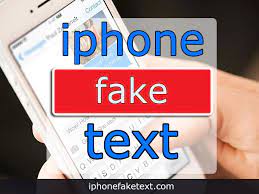Word Art Word Clouds
Description:
Word clouds are such a fun and interesting way to analyze text or to express words in a more artistic way. This is a popular word cloud generator, known for its wide variety of designs. You can customize fonts, layouts, and color, and choose from custom shapes. This tool also offers some pre-processing options like stemming, and removing common words and numbers.
Activity Ideas:
Interpretive: Teacher creates Word art based on a story and students need to predict what the story was about.
Interpersonal: Take the assignment they've been given, have students put it into Word art and then fill out the peer evaluation checklist based on which words were used most frequency, if that's what the author intended, accuracy of those words, etc.
Presentational: Take news article on the same topic from different countries and make Word art images out of them. Based on these images, students present a comparison of the different articles and theorize why different cultures presented the story differently. They could also use Wordart to analyze several different drafts of a project/paper and explain either in written format or orally how their writing has changed between the different drafts.

Make Beliefs Comix
Description:
A school-appropriate comic strip creator in which students can choose from 15 different characters, add text and print their comic strip creation.
Activity Ideas:
Interpretive: Teacher could create a comic strip to establish classroom norms.
Interpersonal: Teacher could create several different comic strips leaving the dialogue bubbles empty. Student would pick a comic strip out of a hat and would have to spontaneously create the dialogue between the different characters.
Presentational: Students would relay the meaning of a proverb, a famous quote or the main theme of a story, scene or poem through the cartoon.
Voki
Description:
Using this site, students or teacher can create a character or speaking avatar. Users can choose the character's style, appearance, and clothing, Students can record their own voice to make their avatar speak. Voice can be recorded via cell phone, the computer's microphone, or a saved audio file can be uploaded. Text to voice is also an option.
Activity Ideas:
Interpretive: As a creative way to get students to listen, teacher creates a blabberize image and students need to answer questions about what they have heard.
Interpersonal: In pairs, students are given the task to craft their Voki avatar after a cultural icon. For example, they are asked to create Frida Kahlo, Salvador Dali, Ricky Martin, or Don Quixote. In Voki, students have to negotiate hair, face features, clothes, and background to finish the Voki. The students can then spontaneously record a 30 second audio clip introducing their character. As an extension, other groups can guess who the character is based on the physical appearance and the voiced introduction.
Presentational: Students write a story narrated by an avatar they create. They then record themselves reading the story and present it to the class. This could also be used as a way for students to introduce themselves at the beginning of the year.
See an example here!
Book Creator
Description:
Book Creator is a simple tool for creating awesome digital books. Create your own teaching resources or have your students take the reins.
Activity Ideas:
Interpretive: Students either read a page from one of the pre-made books or view the artwork and have to make predictions about what the whole story might be about.
Interpersonal: The teacher puts up a picture from a book on Bookcreator and the students have to create a spontaneous dialogue among the characters.
Presentational: Students create a six page Bookcreator book of their own! Students implement the use of the imperfect to describe their childhood in the book. Students will read their books aloud to their classmates in small groups. As a follow-up, students could prepare a program similar to “Reading Rainbow” to discuss what happened in their book or a partner's book. A community outreach task would be to go to a nearby elementary or Pre-K school and read their book to the students.
Description:
Description:
Activity Ideas:
Interpretive: The teacher creates an infographic with facts about their school. Students can read this and answer comprehension questions about it.
Interpersonal: The teacher creates two infographics, each with information missing. Students are put in groups of two. Each group member receives a different version of the infographic (either A or B). Students have to try and fill in their missing information by asking questions in the target language.
Presentational: Students create a web page for a story they are reading or a series they are watching in class. The web page should be the "about us" section of the website. Students work in a group but are each writing a biography of a given character. They will then share this out with the class.
Texting Story
Description:
An app where students can write fictional conversations and export them as videos. iphone Fake Text Messages
iphone Fake Text Messages
Description:
As its name would suggest, this site is great for having students quickly and easily create a fake text message conversation in the target language. After creation, the message can be downloaded and saved.Activity Ideas:
Interpretive: The teacher creates a fake text message between a parent and a student. Students need to read the message and decide how closely this resembles conversations they have with their parents. After teacher creates a fake text message, students could try to figure out what the relationship is between the people: family, friends, romantic, etc.
Interpersonal: The teacher creates several 3-person text messages with only one part filled in (person A). Students are put in groups of two. They read person A's text and they each need to give an appropriate response to person A or to their partner. They then switch the do another one.
Presentational: Students choose two characters from a story they have read or a historical figure and create a fake text message conversation to fit those characters and/or include a famous quote from the historical figure.
 Story Map site
Story Map site
Description:
StoryMapJS is a free tool to help you tell stories on the web that highlight the locations of a series of events. Story maps can be made with actual maps, large photographs, works of art, historic maps, and other image files.Story Dice










